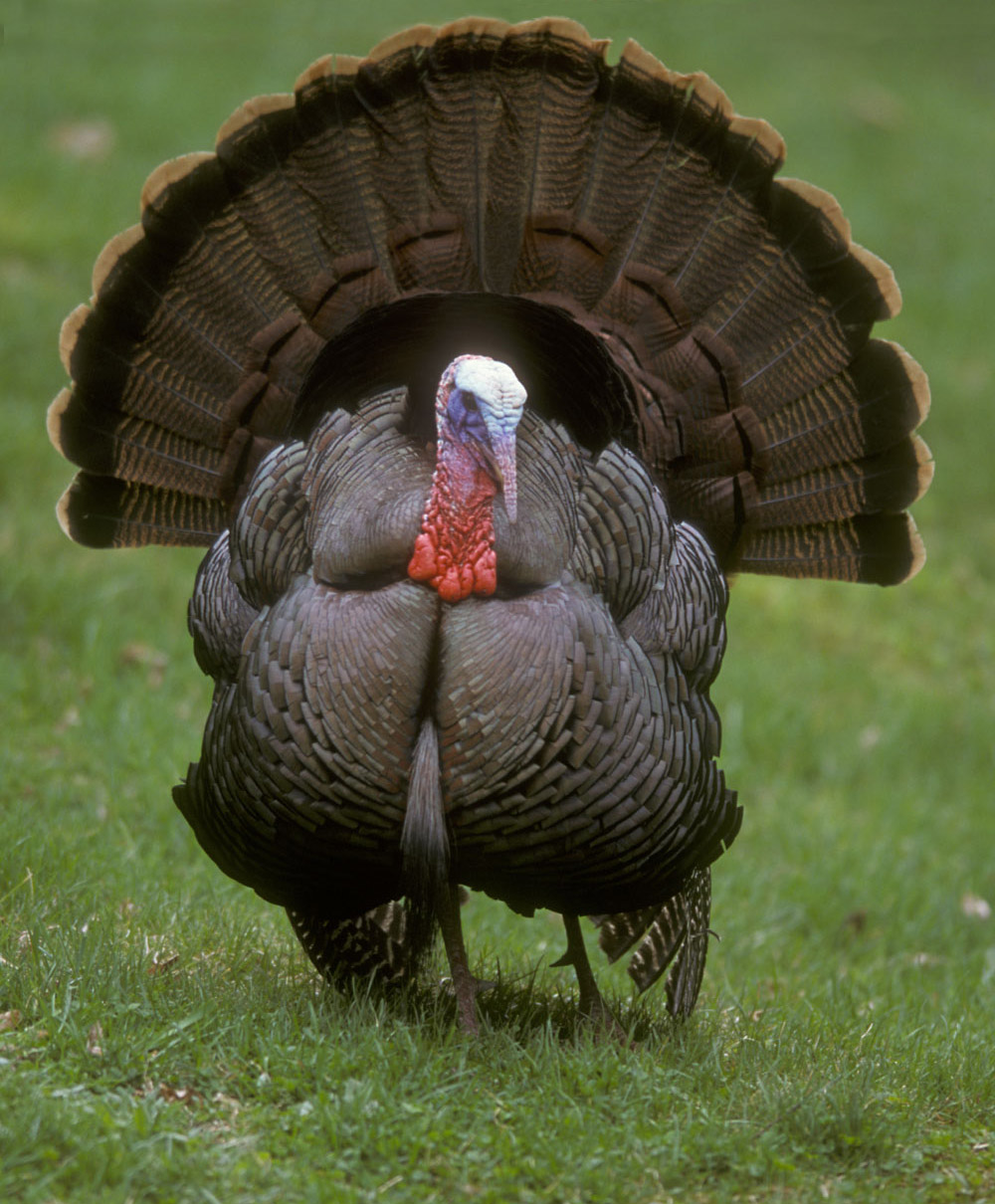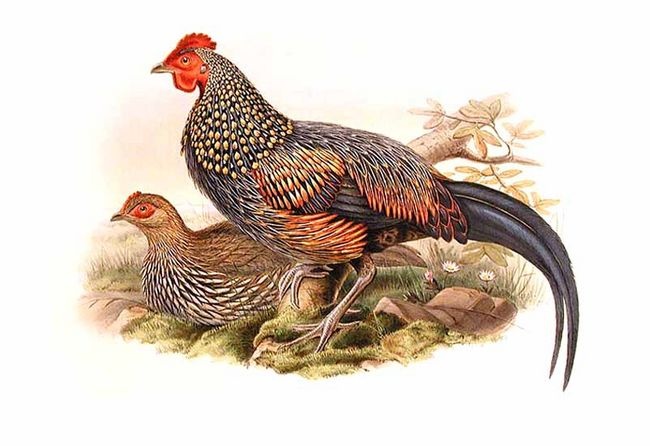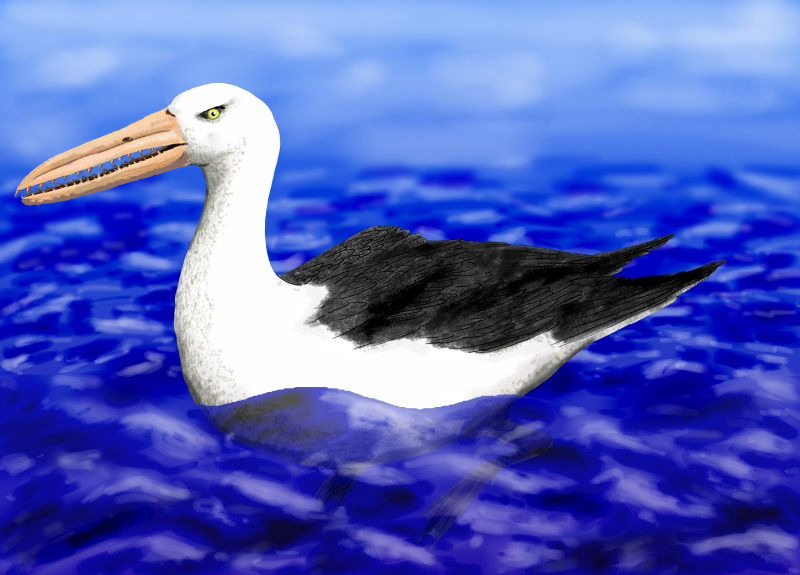|
Pangalliform
Pangalliformes is the scientific name of a provisional clade of birds within the group Galloanserae. It is defined as all birds more closely related to chickens than to ducks, and includes all modern chickens, turkeys, pheasants, and megapodes, as well as extinct species that do not fall within the crown group Galliformes. Classification Galliform-like pangalliformes are represented by extinct families from the Paleogene, namely the Gallinuloididae, Paraortygidae and Quercymegapodiidae. In the early Cenozoic, some additional birds may or may not be early Galliformes, though even if they are, it is rather unlikely that these belong to extant families: * †''Argillipes'' (London Clay Early Eocene of England) * †''Coturnipes'' (Early Eocene of England, and Virginia, USA?) * †''Paleophasianus'' (Willwood Early Eocene of Bighorn County, USA) * †''Percolinus'' (London Clay Early Eocenee of England) * †''"Palaeorallus" alienus'' (middle Oligocene of Tatal-Gol, Mongolia) * †' ... [...More Info...] [...Related Items...] OR: [Wikipedia] [Google] [Baidu] |
Austinornis
''Austinornis'' is an extinct genus of prehistoric ornithuran of uncertain phylogenetic placement from the Late Cretaceous of Texas. The paleontologist Julia A. Clarke named the genus in 2004 based on a partial tarsometatarsus fossil from Austin Chalk. Although ''Austinornis'' was thought to be a pangalliform, other researchers have disputed its classification and dismissed it in phylogenetic analyses due to the fragmentary nature of the holotype. Notably, in 2014, Gerald Mayr suggested that ''Austinornis'' is a non-neornithine from the Coniacian or Santonian age and that the specimen probably belongs to the ornithurine ''Apatornis'' or ''Iaceornis ''Iaceornis'' is a genus of marine ornithuran dinosaurs closely related to modern birds. It was endemic to North America during the Late Cretaceous, living about 83.5 million years ago. It is known from a single fossil specimen found in Gove Cou ...''. References Ornithurae Prehistoric bird genera Cretaceous birds Prehist ... [...More Info...] [...Related Items...] OR: [Wikipedia] [Google] [Baidu] |
Galliformes
Galliformes is an order (biology), order of heavy-bodied ground-feeding birds that includes turkey (bird), turkeys, chickens, Old World quail, quail, and other landfowl. Gallinaceous birds, as they are called, are important in their ecosystems as seed dispersers and predators, and are often reared by humans for their meat and eggs, or hunted as game birds. The order contains about 290 species, inhabiting every continent except Antarctica, and divided into five Family (biology), families: Phasianidae (including chicken, quail, partridges, pheasants, turkeys, peafowl (peacocks) and grouse), Odontophoridae (New World quail), Numididae (guinea fowl), Cracidae (including chachalacas and curassows), and Megapodiidae (incubator birds like malleefowl and Brushturkey, brush-turkeys). They adapt to most environments except for innermost deserts and perpetual ice. Many gallinaceous species are skilled runners and escape predators by running rather than flying. Males of most species a ... [...More Info...] [...Related Items...] OR: [Wikipedia] [Google] [Baidu] |
Sylviornis
''Sylviornis'' is an extinct genus of large, flightless bird that was endemic to the islands of New Caledonia in the Western Pacific. It is considered to constitute one of two genera in the extinct family Sylviornithidae, alongside '' Megavitiornis'' from Fiji, which are related to the Galliformes, the group containing the turkeys, chickens, quails and pheasants. ''Sylviornis'' was never encountered alive by scientists, but it is known from many thousands of subfossil bones found in deposits, some of them from the Holocene, on New Caledonia and the adjacent Île des Pins. It was likely hunted to extinction, shortly after the first human arrival to New Caledonia around 1500 BC. Description ''Sylviornis'' was a huge flightless bird, standing up to tall, and weighing around on average. In the 2016 study, its height in resting stance was estimated up to , while its mass estimate decreased to . It is the most massive pangalliform known to have ever existed. It had a large sku ... [...More Info...] [...Related Items...] OR: [Wikipedia] [Google] [Baidu] |
Grey Junglefowl
The gray junglefowl (''Gallus sonneratii''), also known as Sonnerat's junglefowl, is one of the wild ancestors of the domestic chicken together with the red junglefowl and other junglefowls. The species epithet commemorates the French explorer Pierre Sonnerat. Local names include ''Komri'' in Rajasthan, ''Geera kur'' or ''Parda komri'' in Gondi, ''Jangli Murghi'' in Hindi, ''Raan kombdi'' in Marathi, ''Kattu Kozhi'' in Tamil and Malayalam, ''Kaadu koli'' in Kannada and ''Tella adavi kodi'' in Telugu. Description The male has a black cape with ochre spots and the body plumage on a grey ground colour is finely patterned. The elongated neck feathers are dark and end in a small, hard, yellowish plate; this peculiar structure making them popular for making high-grade artificial flies. The male has red wattles and combs but not as strongly developed as in the red junglefowl. Legs of males are red and have spurs while the yellow legs of females usually lack spurs. The cent ... [...More Info...] [...Related Items...] OR: [Wikipedia] [Google] [Baidu] |
Pangalloanserae
Pangalloanserae is a clade of birds defined in a 2001 study by Jacques Gauthier and Kevin de Queiroz as "most inclusive clade containing Galloanserae but not Neoaves Neoaves is a clade that consists of all modern bird Birds are a group of warm-blooded vertebrates constituting the class (biology), class Aves (), characterised by feathers, toothless beaked jaws, the Oviparity, laying of Eggshell, hard ...". It contains crown Galloanserae as well as all stem-galloanserans. References {{Taxonbar, from=Q88077133 Neognathae Extant Maastrichtian first appearances ... [...More Info...] [...Related Items...] OR: [Wikipedia] [Google] [Baidu] |
Asteriornis
''Asteriornis'' (" Asteria's bird") is an extinct genus of bird from the Late Cretaceous of Belgium which is known from a single species, ''Asteriornis maastrichtensis''. It was a small, long-legged bird that lived near the coastline and co-existed with more "primitive" types of birds such as '' Ichthyornis''. ''Asteriornis'' is one of the oldest-known birds irrefutably belonging to the group Neornithes, which encompasses all modern birds, and is possibly closely related to birds of the extant superorder Galloanserae such as chickens and ducks. It possesses characteristics of both galliformes (chicken-like birds) and anseriformes (duck-like birds), indicating its position as a close relative of the last common ancestor for both groups. ''Asteriornis'' may shed light on why Neornithes were the only dinosaurs to survive the Cretaceous–Paleogene extinction event. Its coexistence with non-neornithean birds such as ''Ichthyornis'' implies that competition was not a primary factor ... [...More Info...] [...Related Items...] OR: [Wikipedia] [Google] [Baidu] |
Late Cretaceous
The Late Cretaceous (100.5–66 Ma) is the more recent of two epochs into which the Cretaceous Period is divided in the geologic time scale. Rock strata from this epoch form the Upper Cretaceous Series. The Cretaceous is named after ''creta'', the Latin word for the white limestone known as chalk. The chalk of northern France and the white cliffs of south-eastern England date from the Cretaceous Period. Climate During the Late Cretaceous, the climate was warmer than present, although throughout the period a cooling trend is evident. The tropics became restricted to equatorial regions and northern latitudes experienced markedly more seasonal climatic conditions. Geography Due to plate tectonics, the Americas were gradually moving westward, causing the Atlantic Ocean to expand. The Western Interior Seaway divided North America into eastern and western halves; Appalachia and Laramidia. India maintained a northward course towards Asia. In the Southern Hemisphere, Aus ... [...More Info...] [...Related Items...] OR: [Wikipedia] [Google] [Baidu] |
Fossil
A fossil (from Classical Latin , ) is any preserved remains, impression, or trace of any once-living thing from a past geological age. Examples include bones, shells, exoskeletons, stone imprints of animals or microbes, objects preserved in amber, hair, petrified wood and DNA remnants. The totality of fossils is known as the ''fossil record''. Though the fossil record is incomplete, numerous studies have demonstrated that there is enough information available to give a good understanding of the pattern of diversification of life on Earth. In addition, the record can predict and fill gaps such as the discovery of '' Tiktaalik'' in the arctic of Canada. Paleontology includes the study of fossils: their age, method of formation, and evolutionary significance. Specimens are sometimes considered to be fossils if they are over 10,000 years old. The oldest fossils are around 3.48 billion years to 4.1 billion years old. Early edition, published online before prin ... [...More Info...] [...Related Items...] OR: [Wikipedia] [Google] [Baidu] |
Anseriformes
Anseriformes is an order (biology), order of birds also known as waterfowl that comprises about 180 living species of birds in three families: Anhimidae (three species of screamers), Anseranatidae (the magpie goose), and Anatidae, the largest family, which includes over 170 species of waterfowl, among them the ducks, goose, geese, and swans. Most modern species in the order are highly adapted for an aquatic existence at the water surface. With the exception of screamers, males have Penis#Birds, penises, a trait that has been lost in the Neoaves, the clade consisting of all other modern birds except the galliformes and paleognaths. Due to their aquatic nature, most species are web-footed. Evolution Anseriformes are one of only two types of modern bird to be confirmed present during the Mesozoic alongside the other dinosaurs, and in fact were among the very few birds to survive their extinction, along with their cousins, the Galliformes. These two groups only occupied two ecologic ... [...More Info...] [...Related Items...] OR: [Wikipedia] [Google] [Baidu] |
Megavitiornis
''Megavitiornis altirostris'' is an extinct, flightless, giant stem-galliform bird that was endemic to Fiji, it is the only known species in the genus ''Megavitiornis''. Originally thought to be a megapode, more recent morphological studies indicate a close relationship with ''Sylviornis'' of New Caledonia, with both genera belonging to the family Sylviornithidae outside of the Galliformes crown group. It is likely that it became extinct through overhunting shortly after the colonisation of the Fiji Islands by humans. Etymology The genus is monotypic, with the generic name ''Megavitiornis'' derived from the Greek ''mega'' (great), ''viti'' (Fiji), and ''ornis'' (bird). The specific epithet ''altirostris'' comes from Latin ''altus'' (high or noble), and ''rostrum'' (bill), referring to the extraordinarily large vertical dimension of its bill. Worthy also suggested “Noble Megapode” would be an appropriate vernacular name for the bird. History It was described by New Zealand pa ... [...More Info...] [...Related Items...] OR: [Wikipedia] [Google] [Baidu] |
Middle Miocene
The Middle Miocene is a sub-epoch of the Miocene epoch (geology), epoch made up of two Stage (stratigraphy), stages: the Langhian and Serravallian stages. The Middle Miocene is preceded by the Early Miocene. The sub-epoch lasted from 15.97 ± 0.05 Ma (million years ago) to 11.608 ± 0.005 Ma. During this period, a sharp drop in global temperatures took place. This event is known as the Middle Miocene disruption, Middle Miocene Climatic Transition. For the purpose of establishing European land mammal ages, this sub-epoch is equivalent to the Astaracian age. References External links GeoWhen Database - Middle Miocene Miocene, .02 Miocene geochronology, 02 Langhian, * Serravallian, * {{geochronology-stub ... [...More Info...] [...Related Items...] OR: [Wikipedia] [Google] [Baidu] |





